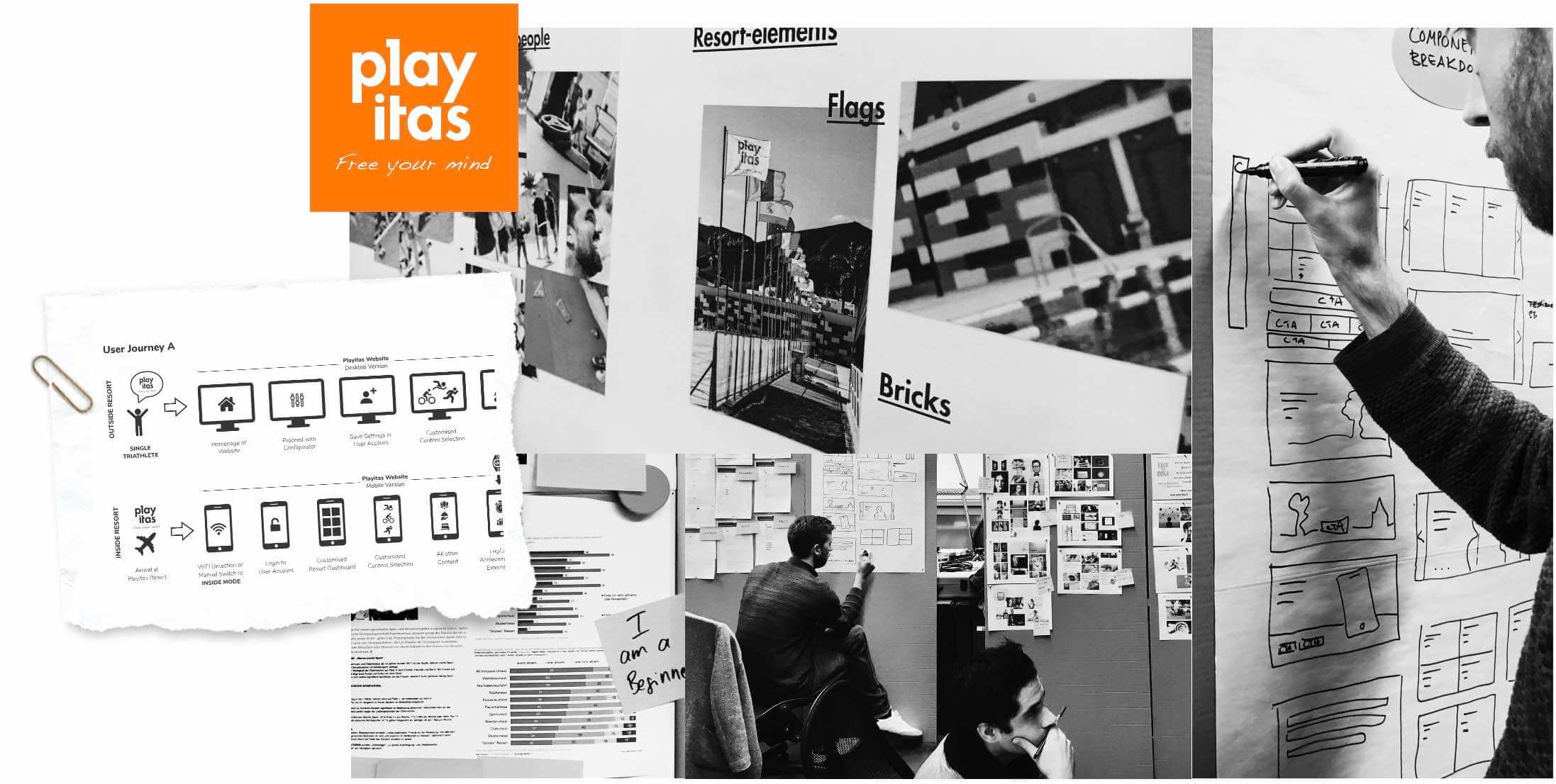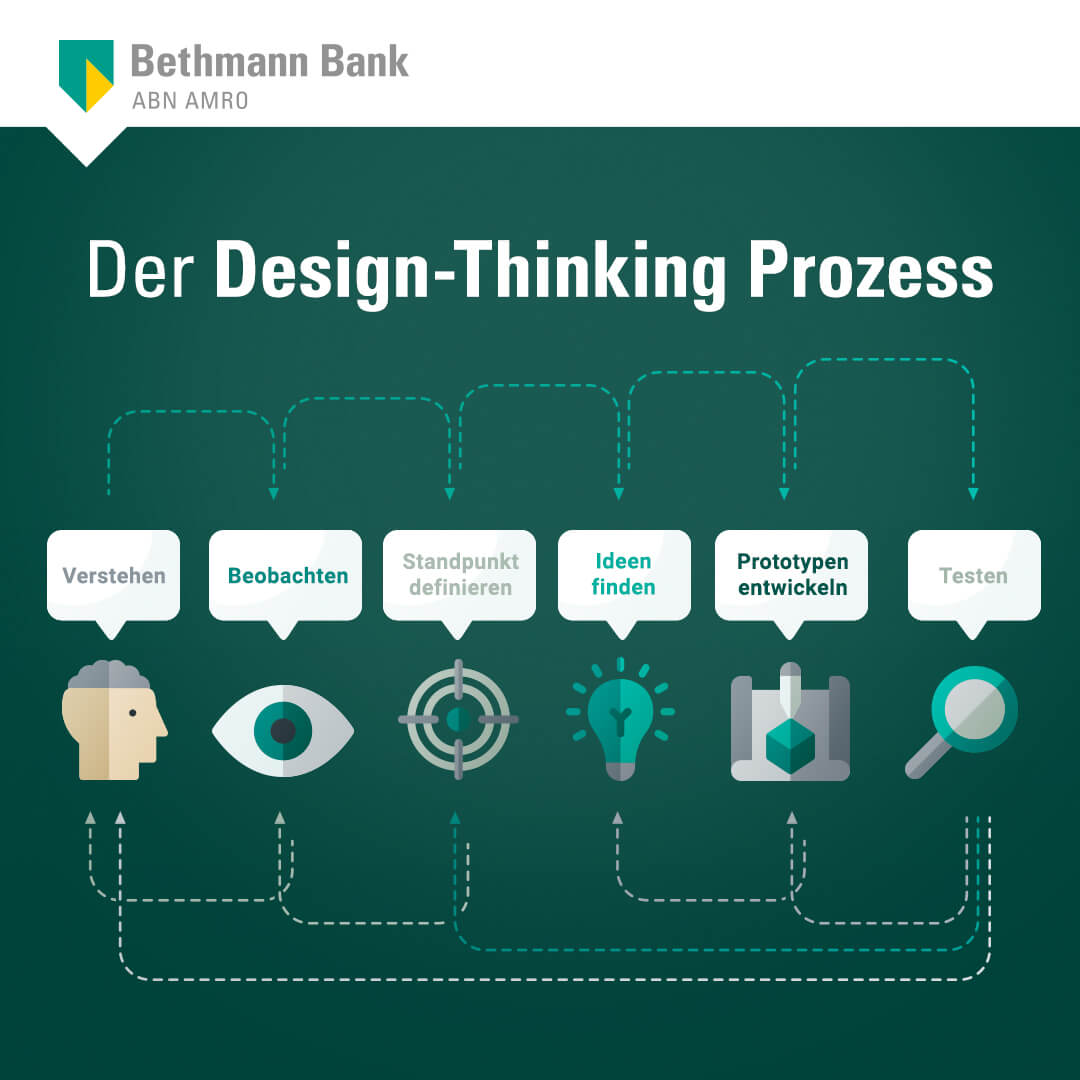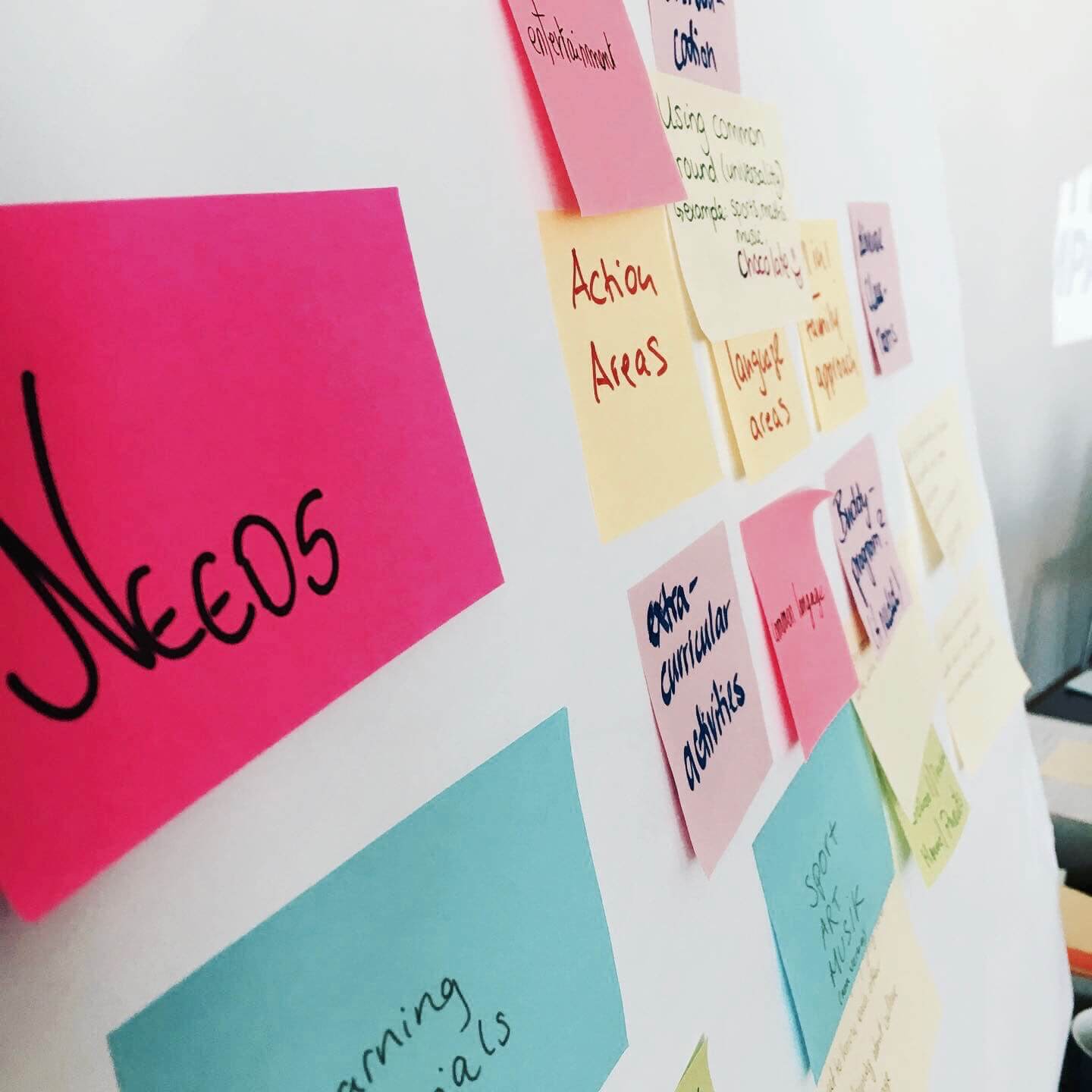How to develop a successful UX Strategy
A Brand's Success depends on its UX Strategy.
Why should you develop a good Strategy for successful User Experiences in the digital space?
Because purely product and Application-centric Development without considering the user will not lead to success. User Experience plays a key role in customer acquisition and retention.
A Brand's touchpoints at the User Interface should therefore be carefully and systematically designed.
The VUCX UX Team guides you through these complex challenges.

UX Strategy Terms and Concepts
- UX Strategy
The planned approach to the design and optimization of the user experience of a product or service is referred to as the UX Strategy
- UX Strategy Development
The process of developing a UX strategy is known as UX Strategy Development. This process leads to the creation of a systematic approach to designing the user experience.
- User Goal
The user goal is what users want to achieve when interacting with a product or service. It can refer to specific tasks that users want to accomplish or subjective goals such as a sense of satisfaction or control.
- User Need
User needs refer to the requirements and desires of users that the product or service is intended to satisfy. These needs can be functional, emotional or social.
- User Journey
The User Journey describes the steps a user takes to achieve a specific goal. It includes all the interactions the user has with the product or service, from discovery to use and, potentially, reuse. In many cases, the terms User Journey and Customer Journey are used synonymously to refer to the steps a user or customer takes to achieve a specific goal.
- Personas
Personas are fictional characters developed from user research that embody the key characteristics, needs, and behaviors of a target audience. They are used to deepen the understanding of users and to shape the development of products and services in a user-centered way. Learn more about Personas here.
- User Story
A User Story is a short, concise description of functionality or user needs, formulated from the user's perspective. User Stories are intended to deepen the understanding of user needs and to guide the development of products and services in a user-centered way. They are often used in agile software development to describe and prioritize system requirements from the user's perspective. A typical structure for a user story is "As a user, I want the chatbot to respond to my service request, so I can solve my data usage problem." Formulating from the user's perspective improves understanding of the user's needs and goals, and highlights the value the system should provide. Detailed steps are then described in a corresponding User Flow.
- User Flow
The User Flow describes the sequence of steps a user takes to achieve a goal. It encompasses all the interactions the user has with the product or service, from discovery to use and eventual reuse.
- Prototyping
Prototyping is the process of creating models or previews of products or services to test and optimize functionality and user experience. Prototyping can occur at various stages of development and can be created on paper, digitally or as a live product.
- MVP / Minimum Viable Product
MVP stands for Minimum Viable Product and refers to the minimum set of features and functionality needed to test and validate a product or service. During prototyping, an MVP is often created to test the core functionality and verify that it meets user needs. An MVP is typically less elaborate and quicker to create than a full-fledged product.
- Wireframing
Wireframing is the process of creating skeletal structures that illustrate the layout and functionality of products or services. Wireframes are typically simple and lack visual elements, focusing on functionality and usability. They help improve understanding of the User Experience and design in a user-centered way.
-
Usability Testing
Usability Testing evaluates how easy a product or service is to use. Test participants are given specific tasks to perform with the product or service, and the results are recorded and analyzed. Usability testing can help identify and correct weaknesses in the user experience.
- User-Centered Design
User-Centered Design (UCD) is an approach to design that puts the user first. It involves deepening the understanding of user needs and behaviors, and designing in a way that makes sense and is easy to use. UCD typically includes activities such as user research, prototyping, and usability testing.
- User Experience (UX)
User Experience (UX) refers to the totality of experiences users have with a product or service. It encompasses all aspects of interaction, from functionality and usability to emotional and aesthetic elements. Good UX should be meaningful, easy to use, and enjoyable.
Customer Journey Map
Design Thinking is a process aimed at developing creative solutions to problems by focusing on understanding the needs and expectations of users.
The Customer Journey Map analysis is a tool used in the Design Thinking process to visualize and understand customers' experiences and interactions with a company or brand. It can help identify weaknesses and opportunities for improvement in the customer experience, fostering the development of creative solutions. It deepens the understanding of customer perspectives and needs, and helps create solutions that meet those needs.
In general, the Customer Journey Map as part of the Design Thinking Process can help to bring the customer perspective into focus and develop creative solutions that improve the customer experience and increase customer satisfaction.
Difference between Customer Journey, User Journey and User Story
There is no standard definition of the term Customer Journey in Online Marketing. There are therefore different models that describe this Customer Journey.
The Customer Journey describes the path a customer takes while purchasing a product or service from a company. This Customer Journey is often extended to include the use.
This usually includes all the steps the customer takes, from recognizing the need and researching options to purchasing and using the product or service. The Customer Journey is used to develop an understanding of how customers perceive the company and which factors influence their decisions.
Expert tip: Clarify these terms and the associated understanding with your agency in advance. Otherwise, there is a risk that the client and agency will start from different premises.
Concepts of the Customer Journey
From AIDA to Messy Middle
There are various concepts and tools that are used to describe and understand the Customer Journey. One of these models is the so-called "Messy Middle", which focuses on the phase of the Customer Journey that lies between the customer's first contact with a company and the actual purchase. This section of the Customer Journey is often referred to as "messy", as it is made up of many different steps that are important for the customer to decide to make a purchase. The post-purchase phase is neglected in this concept.
Messy Middle from Google
The "Messy Middle" model helps companies to understand the different steps a customer goes through during the Customer Journey and can help them to better support and serve the customer.
The Messy Middle Model distinguishes between three main phases:
- The Awareness Phase
In this phase, the customer becomes aware of the company and its products or services. They begin to find out about their needs and options. - The Consideration Phase
In this phase, the customer examines various options and decides which product or service best suits their needs. - The Decision Phase
In this phase, the customer finally makes their purchase decision and buys the selected product or service.
However, there are other models that are used to describe the Customer Journey, such as
the AIDA model (Attention, Interest, Desire, Action),
the 5-step model (Awareness, Interest, Evaluation, Trial, Adoption) or
Moment of Truth Model from Procter & Gamble.
The VUCX Consulting Team became familiar with this concept very early on through its close cooperation with Procter & Gamble on projects in the cosmetics industry.
Moment of Truth by Procter & Gamble
The Moment of Truth is a concept used in customer loyalty research to describe the moment when a customer buys or uses a product or service from a company and forms an opinion about it. The Moment of Truth can be considered an important part of the Customer Journey as it is the moment when the customer evaluates the quality and benefits of the product or service and decides whether or not to remain loyal to the company in the future.
Companies can use the Moment of Truth to convince their customers and win their loyalty by providing a positive Customer Experience. This ensures that the product or service meets the customer's expectations. Companies can also shape the Moment of Truth by providing the customer with information and support to help them make a decision. In this way, companies can help make the Moment of Truth a positive experience for the customer and increase the likelihood that the customer will remain loyal to the company in the future.
There are three important phases that make up the different Moment of Truth:
- Pre-purchase
In this phase, the customer becomes aware of the company and its products or services and begins to find out about their needs and options. This phase also includes researching and comparing different options in order to make a decision.
- Purchase
In this phase, the customer finally makes a purchase decision and buys the selected product or service.
- After the purchase
In this phase, the customer uses the product or service and forms an opinion about it. This phase also includes possible interactions with the company, for example if the customer has questions or problems or if they recommend the company to others.
Three important aspects - experience, interaction and emotion - play an important role in all three phases of the Moment of Truth and influence the customer's opinion and decisions.
- Experience
The customer has an experience with the product or service that influences their opinion.
- Interaction
The customer has an interaction with the company, either directly or indirectly, which influences their opinion.
- Emotion
The customer has an emotional reaction to the product or service that influences their opinion.
These three important aspects of the Moment of Truth - experience, interaction and emotion - play an important role in all three phases of the MoT. They influence the customer's opinion and decisions.
Companies can use the MoT to understand and improve their customers' experiences and interactions by collecting and analyzing data and feedback. They can also use the Moment of Truth to understand customers' emotional reactions to their products and services and use them to win their loyalty.
In the Pre-purchase Stage, the experience the customer has with the company or its products or services influences their opinion and their decision whether or not to consider the company. The interactions the customer has with the company can also influence their opinion, for example when they are advised by a salesperson or when they visit the company's website. Finally, the customer's emotional reactions to the company and its products or services can influence their opinion, for example if they feel attracted to the brand or if they are attracted to the company's advertising messages.
During the Purchase, the customer's experience of the buying process influences their opinion and their decision as to whether they actually want to buy the product or service. The interactions the customer has with the company, for example during payment or delivery, can also influence their opinion. Finally, the customer's emotional reactions during the purchase can influence their opinion, for example, if they feel safe and welcome or if they feel addressed by what they see and hear.
After the Purchase, the experience the customer has with the product or service influences their opinion and their decision as to whether or not they want to remain loyal to the company in the future. The interactions the customer has with the company, for example if they have questions or problems or if they recommend the company to others, can also influence their opinion. Finally, the customer's emotional reactions after the purchase can influence their opinion, for example, if they feel enthusiastic about the product or service and are willing to remain loyal to the company. However, if the customer is dissatisfied or has negative emotional reactions, they may be less likely to remain loyal to the company and may even recommend it to others.
Expert tip: To understand and improve your customers' experiences and interactions, you should collect and analyze data and feedback. This is where Design Thinking Methods can help you.
We are happy to support you in your project with Workshops individually tailored to your company.
UX Strategy Development Process
This process usually includes the following steps:
- The conduct of User Research,
- the developing Personas and User Journeys,
- the creation of Prototypes and Wireframes and
- the carrying out usability tests.
Design Thinking Methods have proven their worth for this strategy development. We are happy to support you in UX Strategy Development with Design Thinking Workshops. Find out more about Design Thinking Workshops here.


